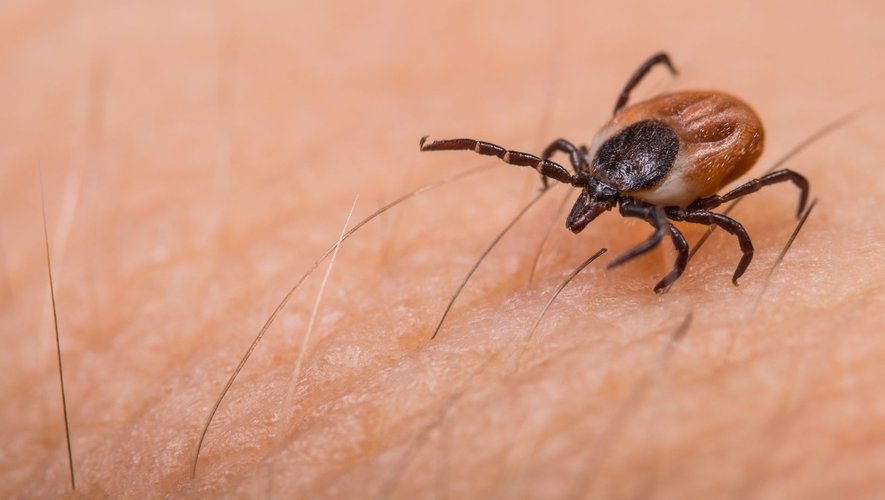Walk in the forest, picnic in a field… So that the bucolic outings of this late spring and summer remain good memories, beware of a small mite whose simple bite can permanently disrupt your life: the tick.
Because yes, the tick is not an insect, but “a hematophagous mite that feeds exclusively on blood”, explains the National Research Institute for Agriculture, Food and the Environment (Inrae). And this mite has another peculiarity: “about half of ticks carry one or more pathogens”such as bacteria of the genus Borrelia, responsible for Lyme borreliosis. It is estimated that about 15% of ticks carry these bacteria.
These ticks live in nature, preferably in forests, hedgerows and gardens. They appreciate brush, bushes, hedges, tall grass… Hence the importance of covering up with long clothes when you are near these areas, in order to avoid bites. These are painless, so it is particularly recommended to carefully examine all unprotected parts of the body when returning from the walk or after gardening, or if you are part of the professions at risk (farmers, landscapers, gardeners, lumberjacks, guards -foresters, game wardens, fishing wardens, etc.).
What to do if you have been stung?
The tick literally clings to the skin. The tick remover is therefore the only way to remove a tick safely, insists the Regional Health Agency of Nouvelle-Aquitaine, one of the regions most affected by the presence of ticks, with the Grand Est, the Burgundy-Franche-Comté and Auvergne-Rhône-Alpes. To properly remove a tick, “slide the hook under the tick without crushing it, as close as possible to the skin, turn gently until the tick unhooks, disinfect the bite area and wash your hands thoroughly”. It is essential to monitor the evolution of the bitten area for a month.
After that ? If you notice the appearance of a red and round plate, which extends in a circle from the sting area, consult your doctor quickly. Indeed, this is a precursor sign of Lyme borreliosis. “The evolution is very favorable when the disease is diagnosed and treated early”warns the Ministry of Health. “A two-week antibiotic treatment is recommended. In the absence of treatment, joint, neurological or skin disorders may occur” often non-specific, and sometimes synonymous with a long therapeutic wandering.
To note : Nearly 47,000 cases were diagnosed in general medicine in 2021, indicates Public Health France, an incidence of 71 cases per 100,000 inhabitants in France.

